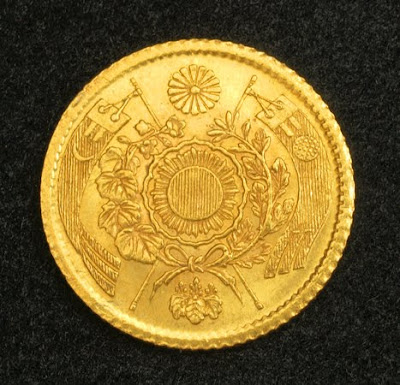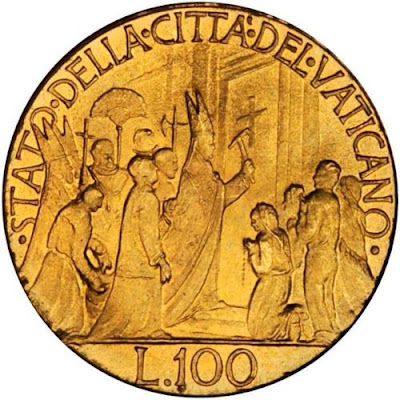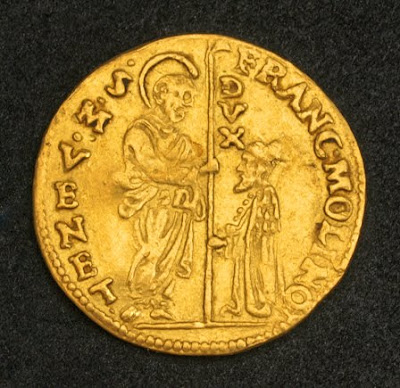 |
| Brazil banknotes500 Cruzeiros Brazilian Commemorative banknote |
 |
| Brazil bank notes500 Brazilian Cruzeiros |
World Currency - Brazilian banknotes - 500 Brazilian Cruzeiros banknote of 1972 - "150 Years Brazilian Independence" Commemorative Issue.
Brazilian banknotes, Cédulas Brasileiras, Brazilian paper money, Brazilian bank notes, Brazil banknotes, Brazil paper money, Brazil bank notes.
Obverse: "representative figures of Brazilian ethnic evolution, a sequence of different breeds in order of historical precedence,".
Reverse: Presents a sequence of letters History - Geographic ("representing the evolution of the Brazilian territorial space ") - Discovery Commerce, Colonization, Independence and Integration.
As part of the sesquicentennial celebrations of the Independence of Brazil (1822-1972), the Central Bank of Brazil issued 500 Cruzeiros Commemorative banknote (five hundred Cruzeiros).
Its basic dimensions are 172 mm x 78 mm , Already larger banknote printed after changing the default milreis for the new standard in 1942 and the first commemorative banknote. Features micro - seals horizontally, the President of the Monetary Council and the Central Bank's President, also has security features - watermark or watermark (Symbol Independence Sesquicentennial 1822-1972), security background with moiré and printing luminescent. Were printed by the House that Brazil's currency used the following colors and printing methods: on the obverse - Green on polychrome in chalcography and offset, in reverse - white and polychrome in chalcography and offset. By Communiqué Mecir # 15 of 31 July 1979, the Central Bank informed the audience that had launched the movement in print "B" 500 Cruzeiros banknote, who had the same characteristics of the print 'A' with some changes., see: "I - inclusion on the obverse of parallel lines, printed in offset, green, white vertical strip located on the far left where the banknote is cast or the filigree watermark. These vertical lines define, under the action of light emerging, a perfect record (overlay) with vertical lines also printed on the reverse, brown in color, II - inclusion on the obverse, the reason specially designed for characters join to form geometric shapes flat , printed in offset, predominantly green color on the white strip located on the far left (lower internal angle) of the banknote. This motif set under the action of light emerging, a perfect record (overlapping) with motive of identical shapes also printed on the reverse, orange brown in color. Banco Central that same statement said the banknotes of the print "A" continue to circulate concurrently with the print "B". These bills circulated in the period 1972 to 1987, when they were demonetized. The graphic design was done by Waldomiro Puntar manuals and prints by José Maria das Neves. F. Saints Trigueiros informs us that "Aloisio Magellan designed the values in inverted positions, first step that could defend the idea of drawing types reversed, employees in the notes put into circulation after this sort."
In the sequence of letters Historical-Geographical have the following stylizations from right to left:
- Discovery
The Cantino planisphere (or Cantino World Map) is the earliest surviving map showing Portuguese Discoveries in the east and west. It is named after Alberto Cantino, an agent for the Duke of Ferrara, who successfully smuggled it from Portugal to Italy in 1502. The map is particularly notable for portraying a fragmentary record of the Brazilian coast, discovered in 1500 by the Portuguese explorer Pedro Álvares Cabral, and for depicting the African coast of the Atlantic and Indian Oceans with a remarkable accuracy and detail. This old map, made-up by 6 glued parchment sheets, was kept in the Ducal Library, Ferrara, for about 90 years, until Pope Clement VIII transferred it to another palace in Modena, Italy. More than two centuries later, in 1859, the palace was ransacked and the Cantino Map lost. It was found by Giuseppe Boni, Director of the Biblioteca Estense, in that same year, in a butcher’s store in Modena. The Cantino world map can currently be found in Modena, Italy, at the Biblioteca Estense. There is a facsimile of the Map Collection at the Foreign Ministry in Rio de Janeiro.
To get a complete map, Alberto Cantino was able to bribe a certain Portuguese government mapmaker with 12 golden ducats to copy this map for him, between December 1501 and October 1502., but got a good job. The anonymous artist who almost certainly belong to the actual workshops, reproduced all known lands by Portugal, reaching the mark of refinement Ascension Island, a location so recent that its discoverers had not yet returned. The "Cantino map" (as it became known) dates from 1502 and measures 105 cm x 220 cm . It also shows the east coast of North America, which would only officially discovered ten years later. " The banknote appears only the portion of the letter that is the representation of the Brazilian coast, with trees and birds and bottom of the Latin inscription "Pollus Antartiais." In the fifteenth century, according to etymology, the word Antarctic meant "opposite the Arctic pole," ie, designated the area opposite to the North Pole and not necessarily the Antarctic region. Note that the trees depicted on the map are more like pine boreal regions than tropical trees themselves, but nevertheless, it is extremely interesting historical map for Brazil.
- Trade
Map "Terra Brasilis" - 1519: The map is part of a collection entitled "Atlasde Miller" and can be found in the National Library in Paris. existed a facsimile Map Collection at the Ministry of Foreign Affairs of Rio de Janeiro - ".. . the maps are of Portuguese origin, which can be attributed to Lopo Homem, official cartographer of the Kingdom in the early decades of the sixteenth century. "Terra Brasilis", a map made by hand on parchment, is part of this atlas and must have been designed around 1519, still under the reign of Dom Manuel. Detailed nomenclature (146 names) indicates points of the Brazilian coast, Maranhão the mouth of the River Plate. For the interior, the map shows realistic illustrations of the indigenous inhabitants, some of them taking care of the extraction of Brazil wood. The inscriptions, as was customary at the time, are made in Latin. E flags, one to the north (now Guyana) and the other to the south (now Argentina), mark the extreme points of the Portuguese forward. Before 1520, the Treaty of Tordesillas, which limited the lands of Santa Cruz with the Spanish possessions, was not fulfilled. " The banknote appears the main part of the letter, with the 146 names do not appear due to their small proportions being represented by dotted lines. Curious to note the Latin inscription on the top left of the chart, although reduced, can be viewed through a magnifying glass or good magnification, and says the following:
“Tabula hec regionis magni brasilis est, et ad partem occidentalem Antilias castelle regis obtinet. Gens vero eius negrescentis coloris fera et immanissima carnibus humanis vescitur. Hec eaden gens arcu et sagittis egregie utitur. Hic psytaci versicolores alie que innumere aves fereque monstruose et scymiarum plura genera reperintur pluriamaque arbor nascitur que brasil nuncupata vestibus purpereo colore tingedis opportuna censetur”.
In English we have: "This is the letter of the Greater Brazil, which plays for the western part, the Antilles with the King of Castile. But we this is brown, brave and very barbaric, and feeds on human flesh. This same people serve with utmost skill of bow and arrows. Here are multi-colored parrots, numerous other birds, beasts, monstrous, and many species of monkeys born to Brazil tree, considered good to dye the robes of red".
Colonization
Map of "Capitanias Hereditárias" - 1574: "In 1532, Dom João III divided Brazil into 12 captaincies in 15 lots (some captaincies had more than one lot) that were given to donatary captains with obligations to defend them, populate them, and to develop their resources.
From the coast, the land was divided into parallel strips and irregular, donated the most illustrious nobles of the Portuguese court. The first Governor-General appointed by John III was Tomé de Sousa, who in 1549 founded the city of Bahia (known at the time as São Salvador da Bahia de Todos os Santos, Holy Saviour of the Bay of All Saints). Much later, in 1574, Luis Teixeira drew this map (now in the Library Help, Portugal), appearing in the captaincies with their grantees (north to south): Rio Grande, Itamaracá, Pernambuco, Bahia, Ilhéus, Porto Seguro, Espírito Santo, Paraíba do Sul and São Vicente. Bahia, considered captaincy of His Majesty, was the seat of the government-general of Brazil. On the map, the line of Tordesillas appears shifted ten degrees west, but it is likely that the error is deliberate, for favoring the Portuguese, extending further west to the borders of the Brazilian colony. " There is a photostat copy of that map in Map Collection of the Ministry of Foreign Affairs. The banknote omits the name of the Captaincy of Lopo de Souza (Sao Vicente) that stretched to the River Plate estuary. Another indication omitted on the banknote (although some contain letters) is the name "Southern Ocean" on the right side of the letter. Note the exaggeration made in relation to the dimensions of the rivers of the Parana River Basin.
- Independence
Map of the time of the Independence of Brazil - 1822, we did not find any special name for the same. The Brazilian borders even before independence were not yet well defined, and the maps of the period still had some inaccuracies. The map, like the previous ones, is not shown in its entirety, so a stylized, so this is actually already in the eighteenth century maps appear captaincies in the Northern Region, as the Captaincy of Rio Negro and the Captaincy of Grand Para So Brazilian territory, at that time, already stretched to the border with Peru (Rio Javari). It may be noted, on the banknote at the top of the map, the Guianas (Guyana and Suriname) allegedly were part of the territory of the newly created Empire. Not true. The Portuguese Court moved to Brazil in 1808 because of the French occupation and D. John VI declared war on
Napoleon and all treaties made between the two countries. With the goal of retribution and restoration of limits with French Guiana, established by the Treaty of Utrecht of 1713, D. John VI ordered the conquest of Cayenne by an expedition which left Pará north. With the help of England (English frigate - Confiance), the Luso-Brazilians occupied French Guiana without major losses. The Guyana remained under Portuguese rule until 1817, when it was restored to the French through an agreement established between France and the United Kingdom of Portugal, Brazil and Algarves. It was a temporary occupation, and French Guiana (today overseas territory of France) was never part of what would become the Empire of Brazil. As for Suriname (then Dutch colony) was never part of the Brazilian territory. Brazilian states, provinces at the time of the Empire has also began to set, highlighting the fact that the State of São Paulo still congregate on its borders which would become the State of Paraná in 1853. Another curiosity are the contours of the then Province of Santa Catarina, this division has existed for almost a century (1738), in that year of 1822, following the route of the Serra do Mar, where he was confined. The territory where stood the old Colonia del Sacramento was built in 1821 to the United Kingdom of Portugal, Brazil and Algarves and becoming Province of the Brazilian Empire in 1824, under the name Cisplatina. In 1825 began the fight separatist, and in 1828 to Cisplatina achieved independence with the creation of the Republic of Uruguay. The contour line of the then province of São Pedro do Rio Grande do Sul, the current state of Rio Grande do Sul, which appears on the map reproduced on the banknote, by all indications is for the Treaty of San Ildefonso of 1777. Perhaps with the location of the origin of this map could more accurately analyze the data herein.
- Integration
Map representing the current boundaries of the national territory and symbolized at the time of the making of the print (1972) a supposed north-south integration, which would be accomplished through the highways were being built, such as the Trans, the Northern Perimeter, the Cuiabá - Porto Velho - Manaus.






































